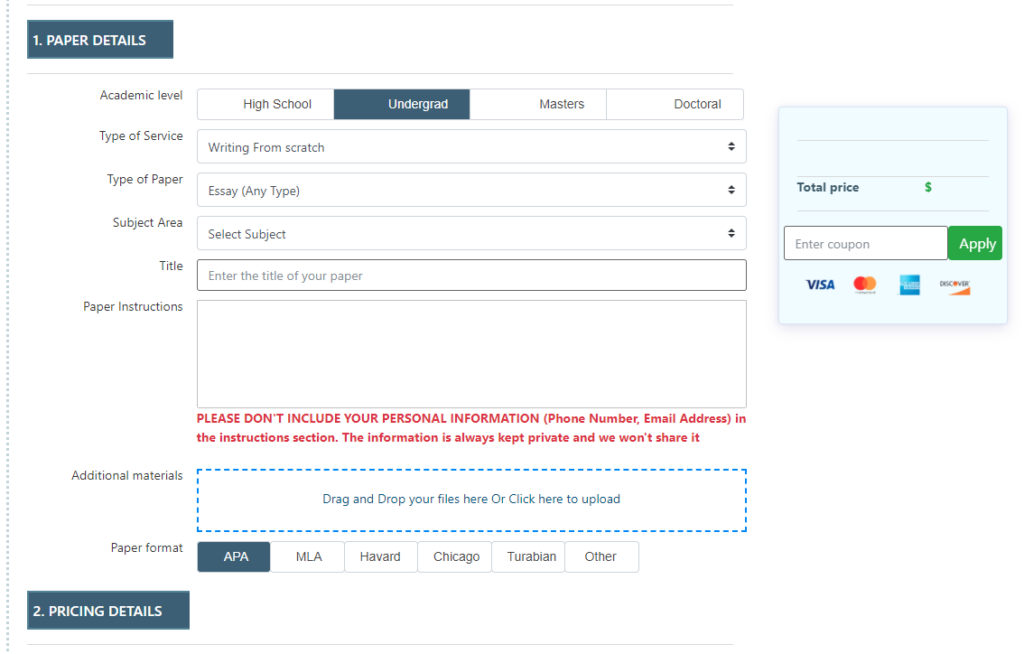Instructions
Poetry can be difficult for the contemporary reader, but with exposure to poetry, patience, and some practice reading poetry, it becomes easier. Itâ€ s always important to remember that every poem has a meaning and the poet intends for you to understand that meaning.
s always important to remember that every poem has a meaning and the poet intends for you to understand that meaning.
Assignment
Go to the Poetry Foundation website: https://www.poetryfoundation.org/ (Links to an external site.)
Use the search tool to find a poem that connects up with something that interests you. You can choose anything you like: colors, animals, sports, cultural ideas, or ethical values – use your imagination. Your term is likely to bring up a number of hits. This might take some time and exploration, but by plugging in keywords that are meaningful to you, youâ€ re bound to be led somewhere interesting, even if unexpected. Once you find a poem that suits you, read it. If there are any words you donâ€
re bound to be led somewhere interesting, even if unexpected. Once you find a poem that suits you, read it. If there are any words you donâ€ t know, be sure to look them up. After youâ€
t know, be sure to look them up. After youâ€ re sure you know all of the words, think about what you think the poem means. Next, read it again, and consider again what you think the poem is saying. Every poem is meant to be read multiple times, and usually, this is the only way to truly understand any poem.
re sure you know all of the words, think about what you think the poem means. Next, read it again, and consider again what you think the poem is saying. Every poem is meant to be read multiple times, and usually, this is the only way to truly understand any poem.
Post the poem, or a link to the poem, on your blog, and along with this, write a short commentary on the poem. This commentary should include a short synopsis where you “translate†the poem into everyday speech, explaining what itâ€ s about. Along the way, give some sense of what makes it aesthetic, and as you do, explain the poem by using at least three appropriate terms from the “Terms to Remember†list from the moduleâ€
s about. Along the way, give some sense of what makes it aesthetic, and as you do, explain the poem by using at least three appropriate terms from the “Terms to Remember†list from the moduleâ€ s lecture presentation. Be attentive and describe the poem accurately. Does your poem have a central image? Does it use metaphors or symbols? If so, be sure and list these as you discuss them. Does your poem involve consonance? Does it have a narrator? Be sure and cite specific elements of the poem in your response.
s lecture presentation. Be attentive and describe the poem accurately. Does your poem have a central image? Does it use metaphors or symbols? If so, be sure and list these as you discuss them. Does your poem involve consonance? Does it have a narrator? Be sure and cite specific elements of the poem in your response.
This assignment should be 250 words minimum and will be assessed on its formal clarity, the quality of the writing and editing, its degree of engagement with its topic, its creativity/inventiveness/originality of ideas, and the sophistication of thought it expresses.
If you need assistance with assignments, please click on the “How” icon.
Rubric
2020 Blog Post/Writing Rubric
2020 Blog Post/Writing Rubric
CriteriaRatingsPts
This criterion is linked to a Learning OutcomeContent
Ability to incorporate and synthesize learned material into written responses that are accurate and meaningful, and which reflect student’s grasp on, and ability to think independently about the course content.
35 pts
Exceptional
The student shows mastery of the relevant information and ideas and demonstrates deep thinking on the topic. The response demonstrates creativity, synthesis, and/or incisive critical thinking on the issues at hand.
30 pts
Good
The student demonstrates a solid grasp of the material and can convey responses to the material in a clear, accurate, and thoughtful manner. Depth of student knowledge and thinking on the topic seems adequate but not exceptional. The response is solid but may not make new critical leaps, or synthesize information in unexpected ways.
25 pts
Adequate
The student demonstrates basic familiarity with the material and adequately addresses the prompt. Conveys ideas in a coherent, though unremarkable, manner.
20 pts
Unacceptable
Student response lacks clarity, accuracy, or demonstrates a lack of thought and engagement about ideas/material, or an inaccurate grasp of ideas/material.
35 pts
This criterion is linked to a Learning OutcomeGrammar/Mechanics
Ability to craft coherent thoughts in standard English, free from errors in diction, spelling, grammar, and punctuation, and edited for flow and clarity.
35 pts
Exceptional
Writing is well-edited and completely free from errors in spelling, grammar, diction, and punctuation. Reads smoothly, clearly, and with careful attention to sentence rhythm, word choice, and thoughtfulness about overall flow.
30 pts
Good
Writing is clear, well-edited, and completely free from errors in spelling, grammar, diction, and punctuation. Shows some awareness of word choice and overall flow.
25 pts
Adequate
Writing is largely free from errors in spelling, grammar, diction, and punctuation is largely clear and demonstrates some attention to editing and reader experience.
20 pts
Unacceptable
Writing contains several errors in spelling, grammar, diction, and/or punctuation. Is unclear and shows little to no editing.
35 pts
This criterion is linked to a Learning OutcomeStructure
Ability to form a body of ideas on a topic into a coherent whole. Knowledge of how ideas flow together and how transitions connect passages logically to one another.
30 pts
Exceptional
Argument/exposition demonstrates mastery of form and flow and overall awareness of the assignment as a written whole. Demonstrates creative, inventive, or incisive solutions for presenting students’ thoughts and course materials in the novel, meaningful and effective ways.
27 pts
Good
Argument/exposition demonstrates a grasp of form and flow and awareness of the assignment as a written whole.
23 pts
Adequate
Argument/exposition is coherent and complete but shows little to no thought to design. Ideas are presented clearly, but with no compelling logic or order.
20 pts
Unacceptable
Argument/exposition is haphazard and not logically presented.
30 pts
The post Poetic License first appeared on https://#.
Poetic License was first posted on November 11, 2021 at 6:24 pm.
©2019 “Submit Your Assignment”. Use of this feed is for personal non-commercial use only. If you are not reading this article in your feed reader, then the site is guilty of copyright infringement. Please contact me at support@#








